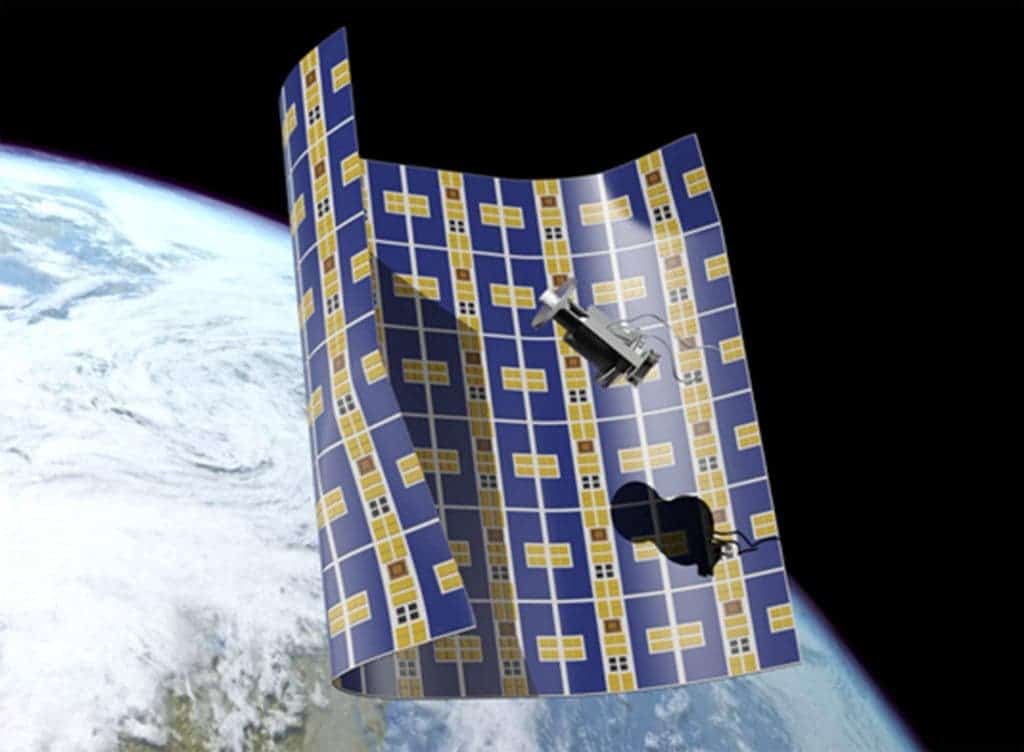NASA has awarded a second round of funding for an experimental project aimed at curbing ‘space pollution’. The project involves deploying a swarm of ultra-thin sheets, only 10-microns in thickness, to wrap around the debris. Eventually, the craft and collected trash crash into Earth’s atmosphere where they’re thermally disintegrated.

The spacefill
Where humans go, trash is never far away. You’ll find human-sourced litter in the deep Amazon jungle or on Antarctica’s frozen coasts. Space is no exception with at least 500,000 pieces of junk — not counting the millions of micro-sized objects like paint flecks — whizzing past at more than 17,500 miles per hour around the planet’s orbit. This is a growing problem because space junk begets more junk after they crash into each other, splattering into smithereens.
Space junk is such a pain in the thruster because even people’s lives are at stake. Astronauts manning the International Space Station were put on high alert and ordered to take to their escape pods more than once because of the risk of crashing with debris. Some scientists have warned that if nothing is done to address the issue fast, Earth’s orbit might be so clogged that we won’t be able to viably launch anything beyond it anymore. Thought Saturn’s rings look cool? We aren’t that far off from inadvertently forming our own set.

So what can we do?
In 2012, Swiss scientists launched a pilot program called the CleanSpace One which is basically a ‘space janitor’. The function of the satellite is to track and offset debris so that their trajectory puts them on a collision course with Earth’s atmosphere. Japan has a mission called Kounotori 6 which can tether space junk with electromagnetic forces. Astroscale, a Japanese startup, plans is to launch a satellite called ELSA-1 that will track debris and stick to it with glue. Other ideas are even wilder, like using lasers to vaporize the surfaces of small pieces and force them down. None of these ideas have left the drawing board.
Out of all the proposed projects so far though, the Brane Craft designed by Aerospace Corporation might take the cake. It’s such an audacious project that you have to wonder what its engineers eat for breakfast. But is it crazy enough to work? You be the judge.
Each Brane is one yard across (0.91 meters) and thinner than half the width of a human hair. But inside it, not only does Aerospace Corp. want to embed ultrathin solar panels, but also electronics and propellant, sandwiched in between two sheets.
Being extremely thin is the crux of this type of solution. You want to deploy a whole swarm — hundreds maybe thousands — and set them loose on the hunt for junk.
At the same time, the Brane design needs to overcome numerous challenges. Though thin and flexible, this super-tech wrapping sheet needs to be almost bullet proof to withstand collisions with micro-sized debris which impact with high kinetic energy. Otherwise — you’ve guessed it — we just end up with more junk.
Another challenge is radiation. Though each Brane should operate for a short while with a hunt and destroy mindset, its electronics need to be resilient enough to maintain comm-links and microprocessor viability. Aerospace Corp. is building each Brane out of multiple segments so if one component is damaged by radiation or tiny junk, the craft is still operational.
In its final form, one Brane craft should be capable of pulling most objects weighing 0.9 kilograms (2 pounds) or less into Earth’s atmosphere. That’s if this project ever leaves the drawing board in the first place. NASA’s Innovative Advanced Concepts program is less about strict deadlines and more about experimenting with technology.
At the end of the day, even if the Brane is a total failure, there are good reasons to believe the technology could be helpful, at least in some places. For instance, what NASA learns from experimenting with Brane crafts could one day make satellites a lot lighter and hence cheaper to launch. Yes, more space junk! It just never stops, sorry.



